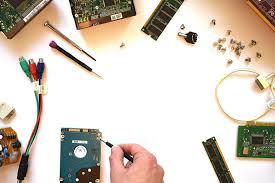The Ultimate Guide to DIY Computer Maintenance
Certainly, here’s a comprehensive guide to DIY computer maintenance that covers both hardware and software aspects of computer support near me:
Hardware Maintenance:
- Cleaning the Exterior:
- Power off your computer and unplug it from the electrical outlet.
- Use a microfiber cloth or compressed air to clean the exterior of your computer, including the case, keyboard, and mouse.
- Wipe down the monitor with a screen cleaning solution.

- Cleaning the Interior:
- Periodically (at least once a year), open your computer case (if it’s a desktop) to clean the internal components.
- Use compressed air to blow away dust and debris from the motherboard, CPU, GPU, and fans.
- Gently clean the motherboard and components with an anti-static brush.
- Pay special attention to the CPU cooler and GPU fans, as dust buildup can lead to overheating.
- Checking Connections:
- Inspect all cable connections to ensure they are secure.
- Re-seat RAM modules, graphics cards, and other expansion cards if necessary.
- Monitor Hardware Health:
- Use diagnostic software like HWMonitor or Speccy to monitor hardware temperatures, fan speeds, and voltages. Unusually high temperatures could indicate a cooling problem.
- Testing for Hardware Issues:
- Run built-in diagnostic tests if your computer offers them. Many computers have a built-in diagnostic utility that can identify hardware problems.
Software Maintenance:
- Operating System Updates:
- Enable automatic updates for your operating system (e.g., Windows Update for Windows, Software Update for macOS).
- Regularly check for and install updates.
- Software Updates:
- Keep all your software up to date, including web browsers, office applications, and any other programs you use.
- Enable automatic updates when possible.
- Disk Cleanup:
- Use the built-in disk cleanup tool (e.g., Disk Cleanup in Windows) to remove temporary files and free up disk space.
- Disk Defragmentation (HDDs Only):
- If you have a traditional hard drive (HDD), periodically defragment it to optimize file storage. SSDs do not need defragmentation.
- Uninstall Unnecessary Software:
- Remove programs and applications you no longer use to declutter your system.
- Anti-Malware Scans:
- Regularly run full system scans using your installed anti-malware and antivirus software.
- Ensure that the software is up to date.
- Backup Your Data:
- Implement a regular backup strategy. Use external hard drives, cloud storage, or a combination to safeguard your important files.
Fides Tech Solutions
9880 Washington Blvd N., Laurel, Maryland, 20723
(410) 705-5125
Security Practices:
- Strong Passwords:
- Use strong, unique passwords for each online account.
- Consider using a reputable password manager to help you generate and store complex passwords securely.
- Two-Factor Authentication (2FA):
- Enable 2FA whenever possible to add an extra layer of security to your online accounts.
- Firewall:
- Ensure your computer’s built-in firewall is active and properly configured.
- Consider using a third-party firewall for added protection.
Backup and Recovery:
- System Restore Points (Windows):
- Create and periodically update system restore points, which allow you to revert your system to a previous state in case of issues.
- System Image Backup:
- Create a system image backup of your entire operating system, software, and data. This allows you to restore your computer to a working state if a major problem occurs.
By following these DIY computer maintenance steps, you can keep your computer running smoothly, enhance its performance, and protect it from potential threats and issues. Regular maintenance can extend your computer’s lifespan and ensure a more reliable computing experience.